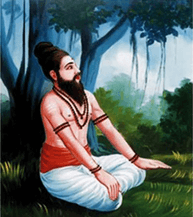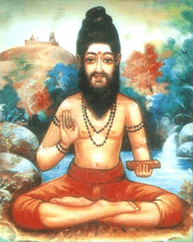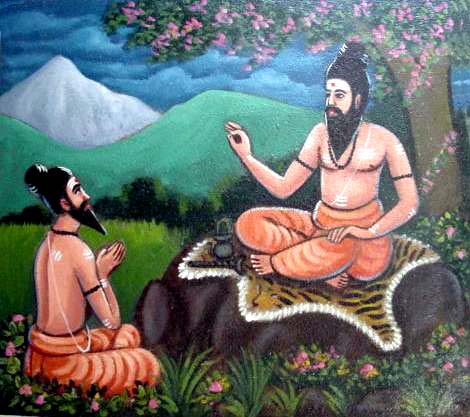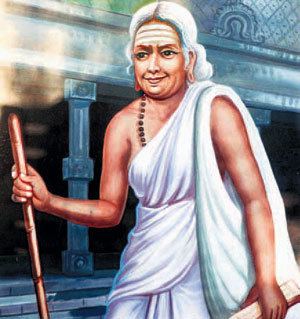
#Thread on Varma Kalai
Today, am not sure how many of us have heard about Varma Kalai. Even if one were to have heard about it, they’d only know Varma Kalai as a form of Martial arts, thanks largely to the silver screen representation (Kamal Hassan’s character in Indian).
Today, am not sure how many of us have heard about Varma Kalai. Even if one were to have heard about it, they’d only know Varma Kalai as a form of Martial arts, thanks largely to the silver screen representation (Kamal Hassan’s character in Indian).
What many might not know is Varma Kalai at its core is a healing art form.
Varmam are the points where life force resides and flows in the human body. Varmam also means where breathing energy resides in the body (Vaakata Nithanam : Verse 31). @anexcommie @shreekanth2020 @shri_v
Varmam are the points where life force resides and flows in the human body. Varmam also means where breathing energy resides in the body (Vaakata Nithanam : Verse 31). @anexcommie @shreekanth2020 @shri_v
Varmam are scattered over various parts of body like in nerves, nerve joints, bones, muscles, ligaments and inner organs.
Based on where varmam is located in the body, it has gathered various names like Vasi, Puravi, Kaalam, Uyir, Mayakkam, Pranan, Kalai, Suvaasam, Saram, Yogam,
Based on where varmam is located in the body, it has gathered various names like Vasi, Puravi, Kaalam, Uyir, Mayakkam, Pranan, Kalai, Suvaasam, Saram, Yogam,
+ Param and Sivam. This has been mentioned in the Tamil text, Vaakata Nithanam.
The use of Varma Kalai is traced back to Vedic period. It is said that the term Varmam appears in Rg Veda, where Indra Deva struck Vitrta in a Varmam with Vajra (would be grateful if learned person +
The use of Varma Kalai is traced back to Vedic period. It is said that the term Varmam appears in Rg Veda, where Indra Deva struck Vitrta in a Varmam with Vajra (would be grateful if learned person +
in my TL could confirm this & share the specific text – thank you).
The origin of Varma Kalai is traced back to Bhagwan Shiva, the following verses from ‘oti murivu sara suthiram 1500’, page 833 is cited as a proof for this claim:
@rspchary @HelloNNewman @RajiIndustani
The origin of Varma Kalai is traced back to Bhagwan Shiva, the following verses from ‘oti murivu sara suthiram 1500’, page 833 is cited as a proof for this claim:
@rspchary @HelloNNewman @RajiIndustani
தெரவே சிவன் உமைக்கு சொன்னா போதம், ஆரல்மால் நான் அரிந்து நூல் சோனானில்
Teravē civaṉ umaikku coṉṉā pōtam, āralmāl nāṉ arintu nūl cōṉāṉil
The above verses explain that the author is documenting in this compilation an art form that was taught to Parvati Devi by Bhagwan Shiva.
Teravē civaṉ umaikku coṉṉā pōtam, āralmāl nāṉ arintu nūl cōṉāṉil
The above verses explain that the author is documenting in this compilation an art form that was taught to Parvati Devi by Bhagwan Shiva.
Devi Parvati then taught this to their Son Bhagwan Muruga, who in turn taught it to Agasthiya Muni. Agasthiya Muni (also known as Agasthiyar Siddhar) went on to document this art and that’s how it reached the masses.
@SriRamya21 @Kishoreciyer1 @krithikasivasw @NandiniVenkate3
@SriRamya21 @Kishoreciyer1 @krithikasivasw @NandiniVenkate3
Even though the original manuscript (and their copies) are not available today, the disciples of the great Siddhas have given this a poetic form, which is used even today to learn the art. It is believed that there are around 50000 such poetic verses available today. @desi_thug1
The 41st prose of ‘Kai Mathirai Thiravukol’ gives an indication of how Siddhar Agasthiyar, Ramadevar and Bogar taught this art to common masses for their benefit. And that the author is helping with differentiating the teachings of great Siddhars.
@Dharma_Chant @VedicWisdom1
@Dharma_Chant @VedicWisdom1

In my research, I found that the basis of Varma Kalai lies in self-defence techniques, however it’s my personal belief that it’s the other way around. What started as a healing art, over a period of time developed into a form of martial arts.
@hathyogi31 @sambhashan_in
@hathyogi31 @sambhashan_in
Varma Kalai was primarily practised by the Ruling Kings of Pandavas, who it’s believed to have trained their soldiers in the first component of Varma Kalai (Adi Murai) to be used in warfare. This was later adopted by other Southern Kingdoms like Cholas and Cheras.
@rightwingchora
@rightwingchora
Varma Kalai in it’s complete form now has three major components. They’re as follows:
1)Martial Art (Adi Murai)
2)Healing Art (Varma Vaidhiyam)
3)Art of Well Being (Vaasi Yoga)
@DivineElement @DeshBhaktReva @InfoVedic @Itishree001 @AnkitaBnsl @Anshulspiritual @RapperPandit
1)Martial Art (Adi Murai)
2)Healing Art (Varma Vaidhiyam)
3)Art of Well Being (Vaasi Yoga)
@DivineElement @DeshBhaktReva @InfoVedic @Itishree001 @AnkitaBnsl @Anshulspiritual @RapperPandit
As per the palm leaves available with the families that have been practising this art since generations, there are 108 vulnerable vital spots – from Adi Murai (Martial Art point of view) and 900 vital points – from Varma Vaidhiyam (Therapeutic/Healing point of view).
@narayanagl
@narayanagl
When the Britishers established their rule in India, they systematically banned the practice of Varma Kalai, as they felt this could be used to uprise against their regime. Over a period of time, we also moved away from the roots and got more attracted +
@jananisampath
@jananisampath
+ towards the fighting styles that are derivative or based on Varma Kalai.
One other reason for decline of Varma Kalai, is that there are very few Aasans (Teachers) who has mastered all three components of Varma Kalai.
@LostTemple7 @Lost_History1 @vairisimha
One other reason for decline of Varma Kalai, is that there are very few Aasans (Teachers) who has mastered all three components of Varma Kalai.
@LostTemple7 @Lost_History1 @vairisimha
And it is always up to the Aasan whether they teach all three components to their disciple or not.
While initially I was surprised that the Siddhars were the teachers of this ancient art forms, I recognised that this fits in to their value system.
@AparBharat @aparnasridhar7
While initially I was surprised that the Siddhars were the teachers of this ancient art forms, I recognised that this fits in to their value system.
@AparBharat @aparnasridhar7
Siddhars predominantly spent time on understanding the human body and to try and overcome it’s shortcomings. And as I opined earlier, though this started off as a healing art, I believe the great Siddhars evolved this into an art of self-defence. @mayfair1958 @chittukuruvi4
So basically, they’re helping out humankind in one way or another.
Hope you enjoyed reading about Varma Kalai. This is just the introduction; I found some good reading material on Varma Kalai and Adi Murai. Will be writing about them in coming days.
@BesuraTaansane
Hope you enjoyed reading about Varma Kalai. This is just the introduction; I found some good reading material on Varma Kalai and Adi Murai. Will be writing about them in coming days.
@BesuraTaansane
Let’s cherish and reclaim our way of life – for better body, mind and soul. The central point of Siddha system.
I’ll see you next time around with information on Sattaimuni Siddhar. Till then bye and take care!
Content Source: varmam.org & varmam.blogspot.com
I’ll see you next time around with information on Sattaimuni Siddhar. Till then bye and take care!
Content Source: varmam.org & varmam.blogspot.com
• • •
Missing some Tweet in this thread? You can try to
force a refresh









